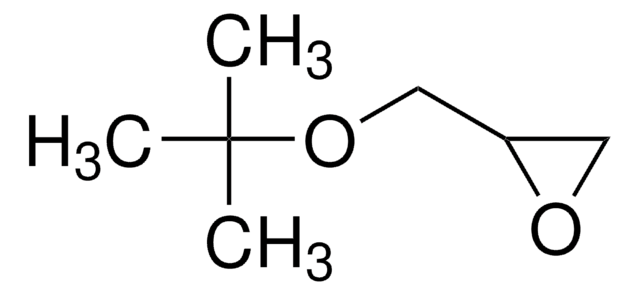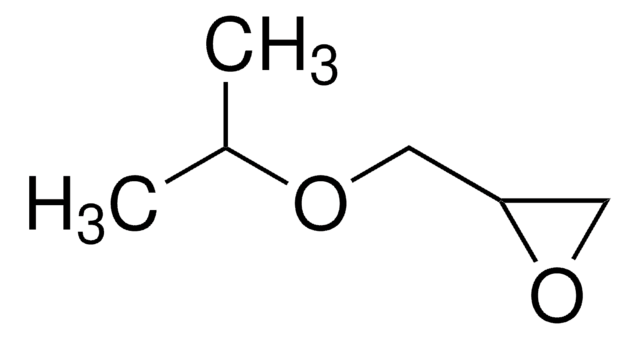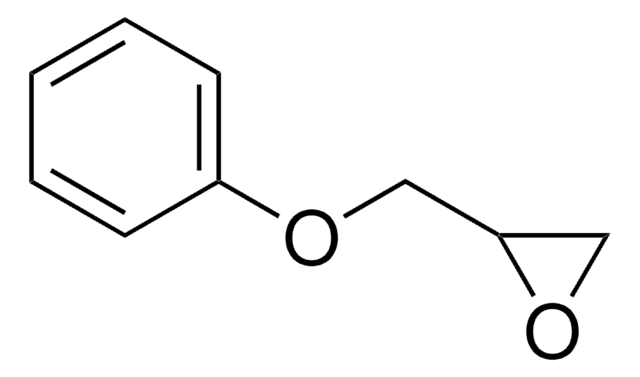251747
2-Ethylhexyl glycidyl ether
98%
Sinónimos:
2-Ethyl hexyleneglycidyl ether, 3-epoxypropane, Glycidyl 2-ethylhexyl ether
About This Item
Productos recomendados
assay
98%
form
liquid
refractive index
n20/D 1.434 (lit.)
bp
60-62 °C/0.3 mmHg (lit.)
density
0.891 g/mL at 25 °C (lit.)
SMILES string
CCCCC(CC)COCC1CO1
InChI
1S/C11H22O2/c1-3-5-6-10(4-2)7-12-8-11-9-13-11/h10-11H,3-9H2,1-2H3
InChI key
BBBUAWSVILPJLL-UHFFFAOYSA-N
Application
- Solution properties of N-(2-allyl-butyl ether)-O-carboxymethyl chitosan and N-(2-allyl-isooctyl ether)-O-carboxymethyl chitosan.: This study explores the solution properties and potential applications of modified chitosan derivatives. It highlights their use in creating biocompatible coatings and medical device adhesives due to their enhanced solubility and functional properties (Liu et al., 2021).
- All-Polycarbonate Thermoplastic Elastomers Based on Triblock Copolymers Derived from Triethylborane-Mediated Sequential Copolymerization of CO(2) with Various Epoxides.: This research details the development of thermoplastic elastomers using 2-Ethylhexyl glycidyl ether as a monomer. These materials show promise in life science manufacturing for creating advanced epoxy systems and low viscosity epoxy resin modifiers (Jia et al., 2020).
- O-Carboxymethyl chitosan-based pH-responsive amphiphilic chitosan derivatives: Characterization, aggregation behavior, and application.: This paper discusses the creation of pH-responsive chitosan derivatives for use in biocompatible coatings and medical device adhesives. The modifications with 2-Ethylhexyl glycidyl ether improve their functionality and application potential in the medical field (Liu et al., 2020).
signalword
Warning
hcodes
Hazard Classifications
Skin Irrit. 2 - Skin Sens. 1
Storage Class
10 - Combustible liquids
wgk_germany
WGK 2
flash_point_f
206.6 °F - closed cup
flash_point_c
97 °C - closed cup
ppe
Eyeshields, Gloves, type ABEK (EN14387) respirator filter
Certificados de análisis (COA)
Busque Certificados de análisis (COA) introduciendo el número de lote del producto. Los números de lote se encuentran en la etiqueta del producto después de las palabras «Lot» o «Batch»
¿Ya tiene este producto?
Encuentre la documentación para los productos que ha comprado recientemente en la Biblioteca de documentos.
Los clientes también vieron
Nuestro equipo de científicos tiene experiencia en todas las áreas de investigación: Ciencias de la vida, Ciencia de los materiales, Síntesis química, Cromatografía, Analítica y muchas otras.
Póngase en contacto con el Servicio técnico










